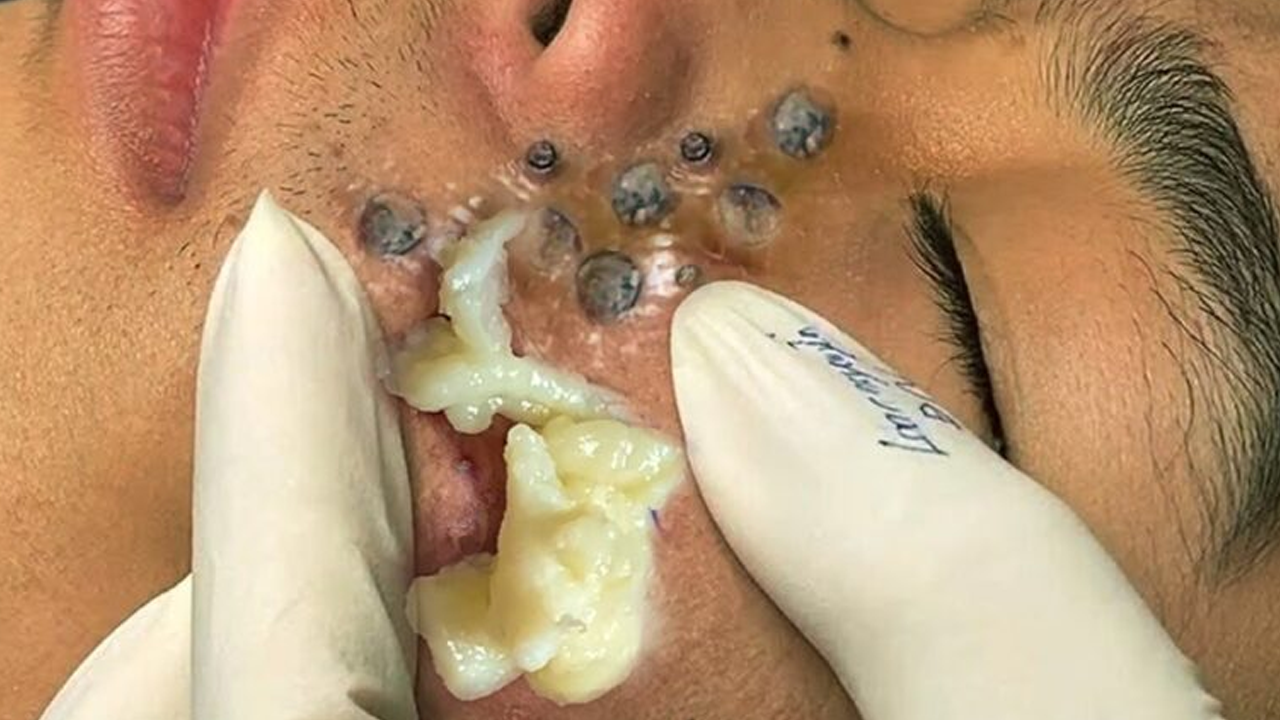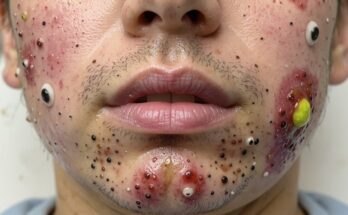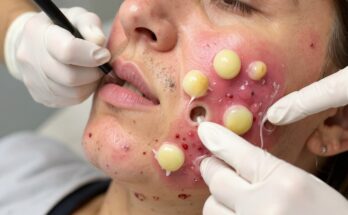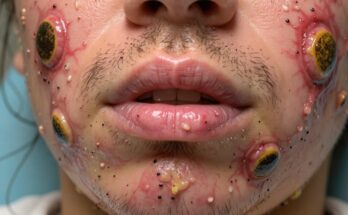Understanding and Managing Cystic Acne: A Comprehensive Guide
Cystic acne, a severe form of acne, presents a unique challenge due to its painful, deep-seated nature and potential for scarring. Unlike milder acne forms, cystic acne involves inflamed, pus-filled cysts that develop deep within the skin’s dermis. This comprehensive guide delves into the causes, symptoms, diagnosis, treatment, and prevention of this challenging skin condition.
What is Cystic Acne?
The Science Behind the Cysts
Cystic acne arises from a complex interplay of factors. Skin pores become clogged with a combination of excess sebum (oil), dead skin cells, and bacteria. This blockage triggers inflammation, leading to the formation of painful, pus-filled cysts beneath the skin’s surface. These cysts are significantly deeper and more inflamed than typical pimples, often resulting in noticeable redness, swelling, and tenderness. Unlike simple pimples, these deep-seated infections are significantly more prone to leaving behind unsightly scars.
Differentiating Cystic Acne from Nodular Acne
While cystic and nodular acne share similarities – deep, painful bumps beneath the skin’s surface, with a potential for scarring – a key difference lies in their composition. Cystic acne lesions are filled with pus, a fluid containing white blood cells battling the infection. Nodules, conversely, are more solid and firm, lacking this pus-filled core.
Identifying Cystic Acne
Appearance and Location
Cystic acne lesions resemble boils, often manifesting as red, swollen lumps beneath the skin’s surface. These can range in size from a small pea to a dime, and may be tender or painful to the touch. Some cysts may develop a whitish-yellow head, oozing pus, and eventually forming a crust. While commonly found on the face (due to the high concentration of oil glands), cystic acne can also affect the back, chest, shoulders, neck, upper arms, and buttocks. Breakouts may be widespread, affecting large areas of skin.
Diagnosis and Treatment Options
Seeking Professional Help
Because cystic acne can lead to significant scarring and potential complications, it’s crucial to seek professional help from a dermatologist. A dermatologist can accurately diagnose cystic acne through a thorough examination of the skin. Self-treatment with over-the-counter products is generally ineffective and may worsen the condition.
Effective Treatment Strategies
Treatment typically involves a multi-pronged approach, often including a combination of topical and oral medications.
Topical Treatments:
- Antibiotic creams, gels, solutions, and lotions: Combat bacteria and reduce inflammation.
- Azelaic acid or salicylic acid: Target bacteria and remove excess dead skin cells.
- Benzoyl peroxide: Reduces bacterial load on the skin.
- Retinoids (e.g., adapalene, tretinoin, tazarotene): Vitamin A derivatives that promote cell turnover and unclog pores.
Other Treatment Modalities:
- Cortisone injections: Quickly reduce the size and inflammation of individual cysts.
- Incision and drainage: A procedure to surgically open and drain the cyst’s contents.
- Oral antibiotics (e.g., doxycycline, minocycline): Control bacterial infection systemically.
- Spironolactone (for women): Reduces hormone levels that contribute to acne.
- Isotretinoin (Accutane): A powerful oral retinoid for severe cases (requires careful monitoring due to potential side effects).
Preventing Cystic Acne
Proactive Skincare and Lifestyle Choices
While genetics and hormonal fluctuations play a role, lifestyle adjustments can significantly reduce the risk of cystic acne.
- Gentle cleansing: Wash your face twice daily with a mild, non-comedogenic cleanser, using lukewarm water and your fingers (avoid washcloths or sponges).
- Hydration: Apply an oil-free moisturizer if needed.
- Makeup: Use non-comedogenic (water-based) makeup and skin care products.
- Hygiene: Remove makeup before bed, keep hair away from the face, and wash your hair regularly.
- Hands off: Avoid touching your face.
- Diet and stress: A balanced diet and stress management techniques may help minimize breakouts. Some studies suggest that diets high in simple sugars and dairy may contribute to acne flares.
Living with Cystic Acne
When to Consult a Doctor
Consult your healthcare provider if you experience:
- Swollen, red, and painful pimples.
- Acne or scarring that impacts your self-esteem.
- Signs of skin infection (increased pain, swelling, redness, warmth, or pus).
Questions to Ask Your Dermatologist
- What are the underlying causes of my cystic acne?
- What treatment plan is best suited for my specific condition?
- What are the potential side effects of the recommended treatments?
- How can I minimize my risk of future breakouts?
- What steps can I take to prevent scarring?
The Importance of Professional Care
Resist the urge to pick or squeeze cystic acne lesions. Doing so increases the risk of scarring, infection, and spread of bacteria. A dermatologist can provide effective treatment, minimizing the likelihood of long-term complications and helping you achieve clearer, healthier skin. Remember, patience is key; clearing cystic acne may take several months.



